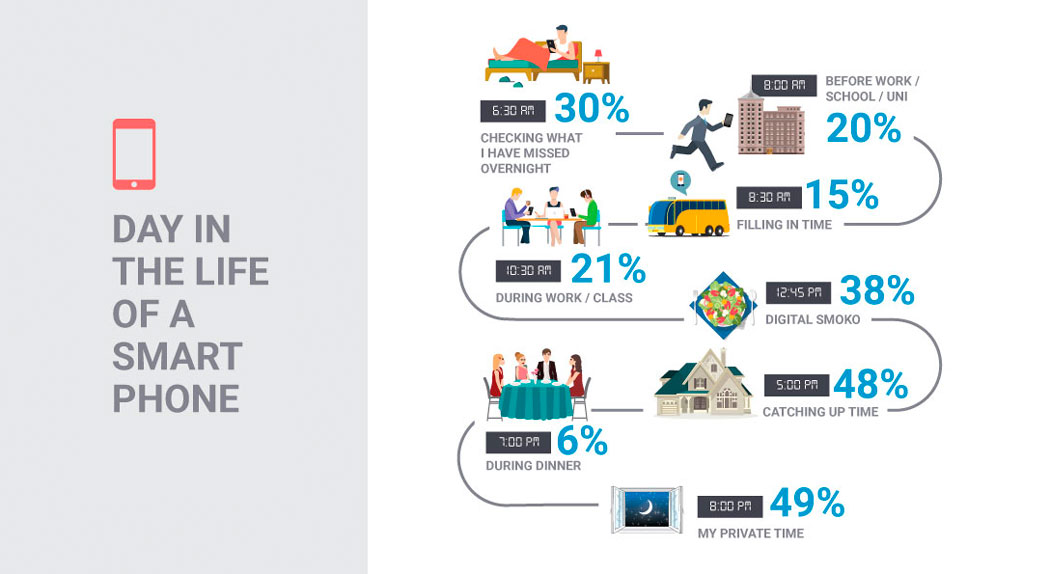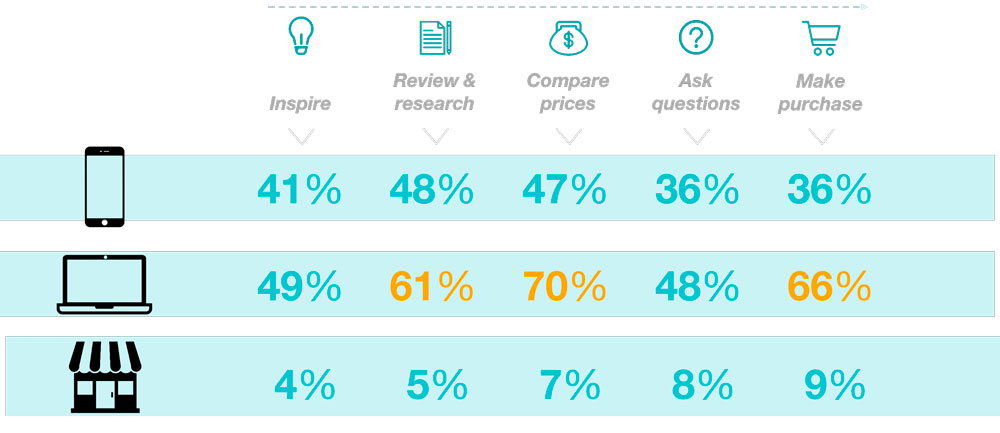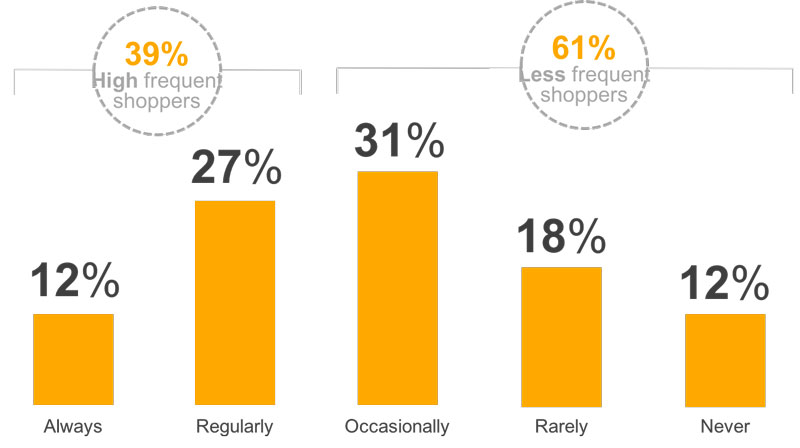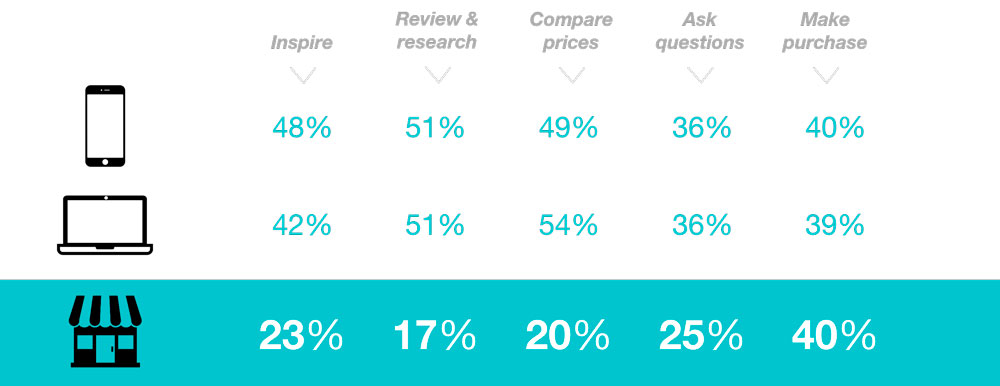By Nikki Quail, founder/MD at Fresh Focus: The subject of mobile in the path to purchase emerged as a common theme in the conversations Fresh Focus has been having while presenting the Adtech-funded report: Behind the Device.
Behind the Device is an in-depth study of smartphones in NZ. It covers topics from a day in the life of a NZ smartphone, usage and attitudes of smartphones to a full segmentation of the NZ smartphone population.
But where it stopped was digging deeper into the role of smartphones in a category-specific customer journey. So we decided to go back to NZ smartphone users and ask them about that.
We asked a nationally representative sample of n=1000 NZ smartphone users to tell us about the role their mobile plays when shopping in two categories: travel and retail. We chose these categories as felt they were broad enough to be applicable to other verticals and are fast growing online segments.
First, we asked mobile users how often they purchased products and/or services on their mobile phone. Four in 10 (39%) claimed they always or regularly purchased. This leaves 60% of Kiwis STILL relying on making that final purchase on a computer or in store.
Non-Europeans are twice as likely to use their mobile phone to buy than Europeans, but what about other New Zealanders? Chinese, Indian, Maori and Pacific Island shoppers are twice more likely than NZ Europeans to use the mobile to purchase products and services.
So if you are targeting Auckland and these fast growing populations – mobile would seem like the intuitive channel to not only connect with them but convert a sale.
“It’s the ability to shop without having to leave the hous – I can be in my sweatpants, relaxed and open to shopping without stress,” says AUT senior marketing lecturer Dr Sommer Kapitan.
“It’s a research tool, but if it’s easy to carry through to a purchase then you feel an instant sense of accomplishment.”
She says digital channels now dictate the travel customer journey.
“In the last 6 months, six in 10 [63%] of New Zealanders booked a flight, rented a car or booked a holiday either through a travel agent or online,” she says. “Of these, you can clearly see that mobile plays a strong role through the earlier stages of their journey, but drops away when customers start to refine their purchase decision.”
So, this begs the question… what happens to your booking when someone switches from mobile to laptop to make their final purchase? Take a moment and think about all the different scenarios that could happen when you break that journey mindset – customers are exposed to different offers, kids come into the room and break their focus, they talk to a friend/family, they get second thoughts or decide to wait.
This demonstrates the need to quarantine customers within the more personalised, focused mobile experience to avoid potential loss of sales.
Bricks and mortar still plays a role in the retail customer journey.
Digital channels play a key role in the earlier stages of the retail customer journey but as customers get further down the purchase funnel, they are just as likely to make the final purchase in a bricks and mortar store as they are online.
Anecdotally from other projects we have worked on, we know this is true as customers playback to us time and time again: ‘I like to touch, feel, check the quality, play’.
It is a highly tactile category and for this reason, mobile plays a slightly different role than in travel. It is more about inspiration and where relevant – guiding and making it as easy as possible for customers to find their closest store with the product they are looking for in that moment – hopefully it is your store!
We asked New Zealand smartphone users why they did not purchase more on their mobile.
Over half claim difficulties with navigating the mobile site and finding the payment check out hard to use on phone.
When you review these barriers, it is worth considering how frequency would be influenced if brands simply focused on improving their mobile shopping cart experience.
So in summary:
- Mobile plays a significant role in the consumer path to purchase even if you can’t always attribute it to a sale.
- Our ever-evolving relationship with mobile continues to impact how brands are and should be communicating with customers.
- The digital divide is closing … opening up opportunities to engage with hard to reach audiences through mobile.
- Make every brand experience significant – make it easy to find your product/services on mobile and purchase in the moment.
- Overcome barriers to purchasing on mobile through a fast, responsive design to make it seamless to navigate and buy.
- Consumers are always in charge – help solve their problems, offer new services faster, give them every reason to choose you.
- To learn more about these recent findings or discuss how Fresh Focus could help your business better understand its customer journey, click here: freshfocus.typeform.com/to/o3dK8w to share your details and we’ll be in touch to book a coffee.
Share this Post






